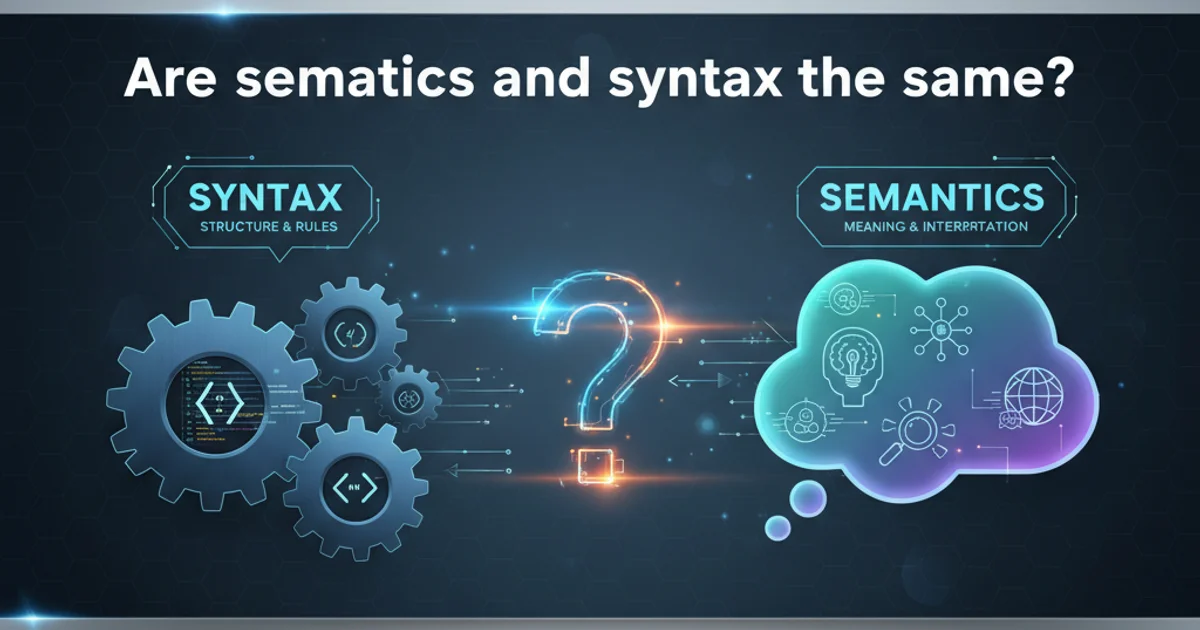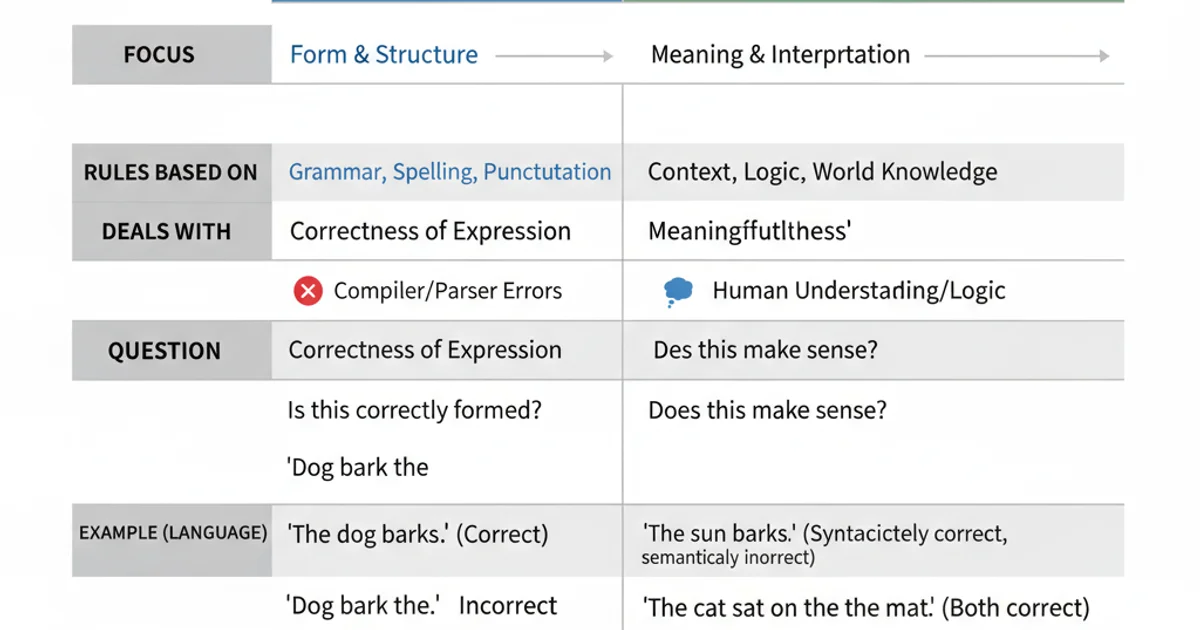Are semantics and syntax the same?
Categories:
Syntax vs. Semantics: Understanding the Language of Code

Explore the fundamental differences between syntax and semantics in programming languages and natural languages, and why both are crucial for effective communication and functional code.
In the world of programming and even natural language, terms like 'syntax' and 'semantics' are frequently used. While often discussed together, they represent distinct yet equally vital aspects of communication. Understanding their differences is key to writing correct, understandable, and functional code, as well as interpreting human language effectively. This article will demystify these concepts, providing clear definitions, examples, and illustrating their interplay.
What is Syntax?
Syntax refers to the set of rules that govern the structure and arrangement of symbols, words, or elements in a language. It's about the form, not the meaning. Think of it as the grammar of a language. If you violate syntax rules, your code (or sentence) will be considered malformed and typically won't compile or execute correctly. In programming, this means adhering to specific keywords, operators, punctuation, and statement structures defined by the language specification.
print("Hello, World!") # Correct syntax
prnt("Hello, World!") # Syntax error: 'prnt' is not a defined function
print("Hello, World!" # Syntax error: Missing closing parenthesis
Examples of correct and incorrect Python syntax.
What are Semantics?
Semantics, on the other hand, deals with the meaning or interpretation of valid syntactic constructs. It's about what a piece of code or a sentence does or intends to convey. A syntactically correct statement can still be semantically incorrect if it doesn't make logical sense or doesn't achieve the desired outcome. For instance, a program might compile without errors (syntactically correct) but produce incorrect results (semantically incorrect) due to flawed logic.
let x = 10;
let y = 0;
let result = x / y; // Syntactically correct, but semantically problematic (division by zero)
// Another example:
let age = "twenty"; // Syntactically valid assignment
if (age > 18) { /* ... */ } // Semantically problematic if 'age' is expected to be a number for comparison
Examples of JavaScript code that is syntactically correct but semantically flawed.
The Interplay: Syntax and Semantics in Action
Syntax and semantics are inseparable. You need correct syntax to even begin to convey meaning, and without meaning, syntax is just a collection of symbols. Consider the following diagram illustrating their relationship:
flowchart TD
A[Input Code/Sentence] --> B{Syntactic Analysis}
B -->|Syntax Error| C[Invalid Structure]
B -->|Syntactically Correct| D{Semantic Analysis}
D -->|Semantic Error| E[Meaningless/Incorrect Logic]
D -->|Semantically Correct| F[Understood Meaning/Correct Execution]Flowchart illustrating the sequential processing of syntax and semantics.
This diagram shows that syntactic analysis is a prerequisite for semantic analysis. A compiler or interpreter first checks if the code adheres to the language's grammar rules. Only if it passes this check does it proceed to understand what the code is supposed to do. The same applies to human communication: you must form grammatically correct sentences before their meaning can be properly interpreted.
Key Differences Summarized
To solidify the distinction, here's a quick comparison:

Comparison of Syntax vs. Semantics